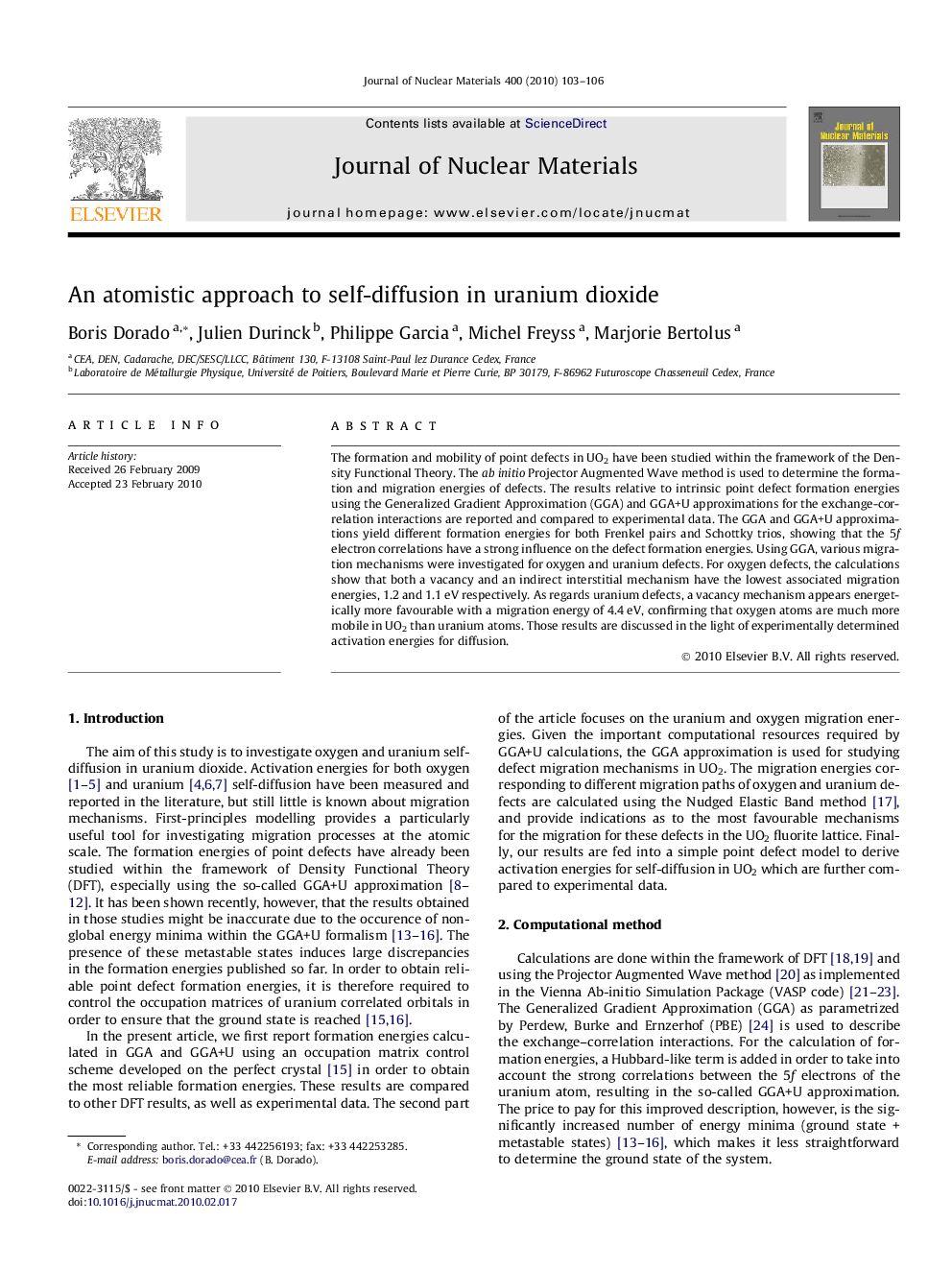| Article ID | Journal | Published Year | Pages | File Type |
|---|---|---|---|---|
| 1567647 | Journal of Nuclear Materials | 2010 | 4 Pages |
The formation and mobility of point defects in UO2 have been studied within the framework of the Density Functional Theory. The ab initio Projector Augmented Wave method is used to determine the formation and migration energies of defects. The results relative to intrinsic point defect formation energies using the Generalized Gradient Approximation (GGA) and GGA+U approximations for the exchange-correlation interactions are reported and compared to experimental data. The GGA and GGA+U approximations yield different formation energies for both Frenkel pairs and Schottky trios, showing that the 5f electron correlations have a strong influence on the defect formation energies. Using GGA, various migration mechanisms were investigated for oxygen and uranium defects. For oxygen defects, the calculations show that both a vacancy and an indirect interstitial mechanism have the lowest associated migration energies, 1.2 and 1.1 eV respectively. As regards uranium defects, a vacancy mechanism appears energetically more favourable with a migration energy of 4.4 eV, confirming that oxygen atoms are much more mobile in UO2 than uranium atoms. Those results are discussed in the light of experimentally determined activation energies for diffusion.
